All about cupronickel dishes
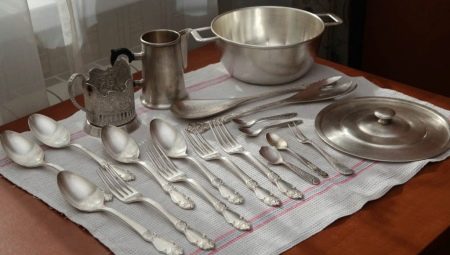
Cupronickel crockery is a budget analogue of silver. In the past, products made from these materials were produced in the same model, but with different markings. If you clean the cutlery well, then they look quite attractive and elegant. Cupronickel has a beneficial effect on health, which also attracts buyers.
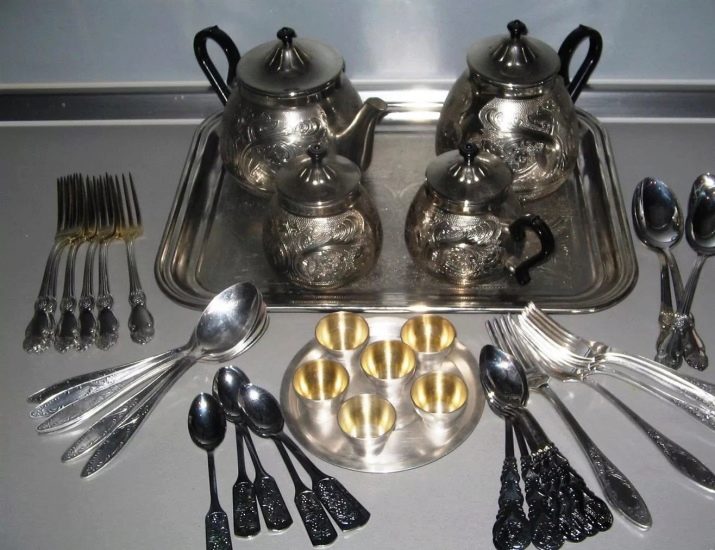
Features of cupronickel
French scientists discovered this alloy during the time of Napoleon. Cupronickel is 80% copper and 18% nickel. Depending on the grade of the alloy, the melting temperature ranges from + 1190– + 1230 ° С. Cutlery from pure cupronickel has not been produced since the last century. Today, an improved and safer nickel silver is used, with the following composition: 50-60% red copper, 20-30% zinc, 15-20% nickel and a little silver as a coating.
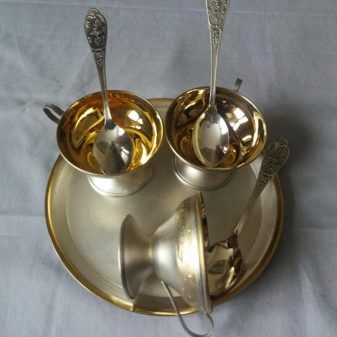
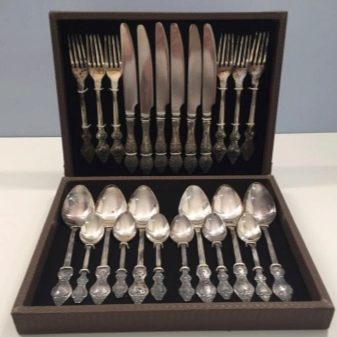
Benefit and harm
Some people mistakenly believe that cupronickel dishes can harm the body. In fact, each component of the alloy is beneficial. The use of cupronickel cookware leads to the following results:
- nickel accumulates in the parathyroid and pancreas; it is able to enhance the effect of insulin, due to which the level of glucose in the blood remains low;
- nickel ions are involved in the oxidation of ascorbic acid, improve the work of enzymes;
- copper in micro doses is present in the blood, the metal has antibacterial properties and is an essential component of many enzymes; the daily dose for an adult is 0.9 mg;
- cupronickel is able to maintain youth and attractiveness of the skin; you can wash yourself with water with ions of this alloy every day to prevent the development of skin diseases and early aging, and to obtain such a liquid, it is enough to leave the cupronickel product for several hours in a container.

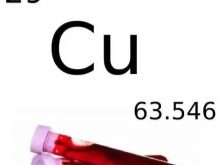

Cupronickel can only harm the body if used too often.... Excessive metals in the body can worsen the condition of teeth, bones and the whole body. However, cupronickel dishes are coated with silver so that copper does not come into contact with food.
If the cutlery is not damaged, it is completely safe to use it.

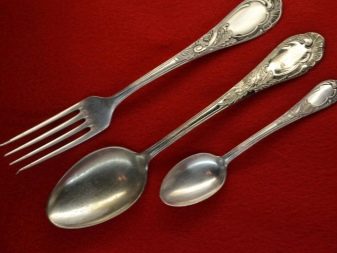
How to clean?
Cupronickel dishes will shine and delight the eye if you regularly use cleaning products. You can use folk recipes or industrial preparations. Dark plaque forms as a result of improper use or storage of dishes in high humidity. You can prevent the appearance of dark plaque as follows:
- wash the appliances immediately after use, food leftovers contribute to rapid oxidation;
- wipe the appliances with a soft cloth after washing;
- it is worth storing dishes from cupronickel in a dry place; you can even place a product nearby that absorbs moisture, such as salt;
- wrap each item in cling film or foil and place in a box, since restricting oxygen access prevents the metal from oxidizing quickly;
- do not keep alloy dishes near household chemicals, especially those containing chlorine; the substance accelerates oxidation.
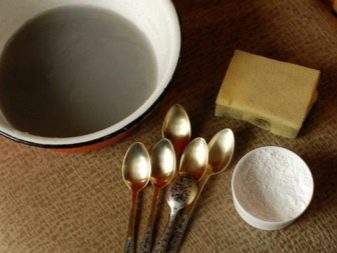

Cupronickel is quite simple to clean at home. Soda is the most popular remedy.
A weak solution (2 tablespoons per 1 liter of water) helps to cope with minor contamination. It is enough to soak the device in liquid for 5 minutes and rinse it under running water. You can also moisten the baking soda to the state of porridge and polish the stain.
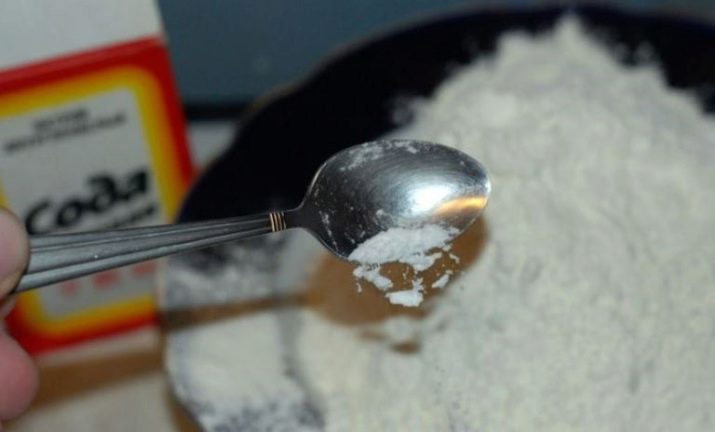
If it is necessary to clean up serious pollution, then it is necessary to act as follows:
- cover the bottom of the aluminum pan with a piece of food foil;
- pour soda on the bottom at the rate of 1 tbsp. l. for 1 liter. water;
- put cutlery in a container and fill with water;
- if necessary, you can add 1-2 tbsp to the solution. l. salt, then the cleaning process will accelerate;
- boil water, reduce gas to minimum and wait another 20 minutes;
- remove the container from the stove and wait until it cools completely.
Important! Darkening will also disappear if you treat them with ethyl alcohol or vodka. For the best effect, it is worth polishing the product with a woolen cloth.
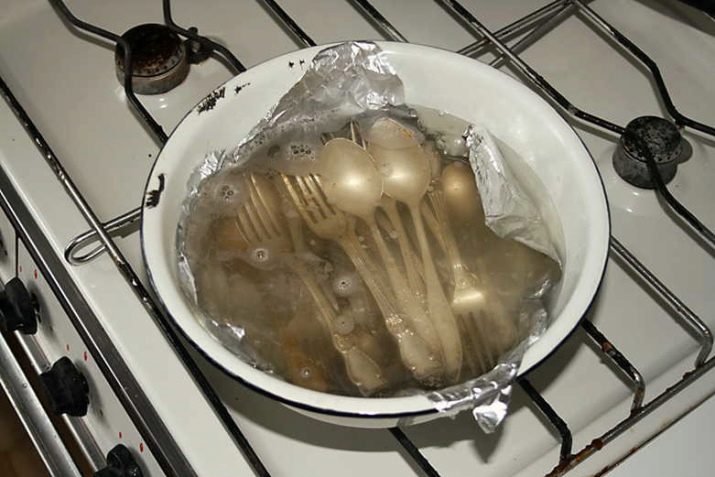
Other interesting folk remedies for removing alloy oxide.
- Ammonia should be diluted in water. Place the cupronickel product in the solution for a few minutes, rinse with running water and wipe thoroughly. The whitening properties of ammonia solution allow you to cope even with very dark and large stains.
- Wine vinegar (wine alcohol) is suitable for cleaning gilded items. The contaminated area must be moistened with a product and rinsed with plenty of running water, then rubbed.
- Food vinegar can be diluted in water in a ratio of 1: 10. Apply the solution with a sponge, wipe thoroughly. Rinse with running water and wipe dry.
- Citric acid dissolved in water at the rate of 100 g per 1 liter of water. It is necessary to boil the dishes in liquid over low heat for 20 minutes.
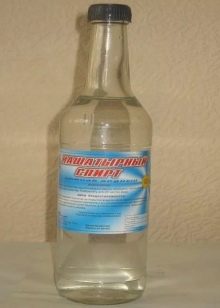
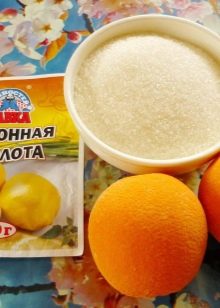
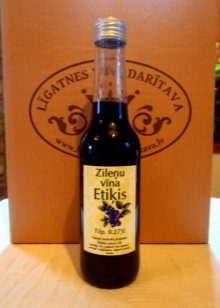
You will learn how to properly clean cupronickel in the video below.








